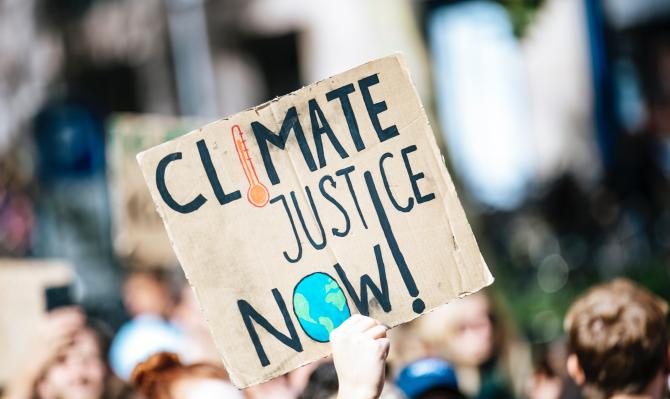The impact of climate change on tourism in Spain: analysis and outlook
Using anonymised and aggregated data from card payments made via CaixaBank point of sale terminals, we analysed whether there were any changes in tourist spending and found that the hottest areas of the country experienced slower growth in tourist expenditure between the high seasons of 2019 and 2023. We also found changes as well as changes in the pattern of expenditure during heat waves.

Climate change represents a first-order challenge for the tourism sector. In July 2023, the European Commission published a study that places some areas of Spain among the European regions where tourism is most vulnerable to climate change. Using anonymised and aggregated data from card payments made via CaixaBank point of sale terminals, we analysed whether there were any changes in tourist spending and found that the hottest areas of the country experienced slower growth in tourist expenditure between the high seasons of 2019 and 2023. We also found changes as well as changes in the pattern of expenditure during heat waves. Our analysis highlights the need for the tourism sector to consider climate risk and prepare for a future with more extreme temperatures.
The study «Regional impact of climate change on European tourism demand» by the Joint Research Centre (JRC) of the European Commission, published in July 2023, includes estimates of the tourism sector’s vulnerability to climate change in the different European regions. As can be seen in the maps below, Spain contains several of the regions considered most vulnerable to adverse climate scenarios. According to these estimates, in an extreme scenario with temperature gains of four degrees Celsius, the Region of Murcia and the Balearic Islands would see inbound tourism fall by more than 5% over the year as a whole
The JRC’s projections for Spain are particularly severe for the high season. For the year as a whole, in scenarios of a temperature gain of three and four degrees Celsius, we would see a fall in tourism demand of 1.6% and 3.1%, respectively (this estimate incorporates an increase in tourism demand between October and May). However, for the months of July and August the JRC forecasts a drop in tourism demand of almost 10% in the three-degree scenario and more than 15% in the four-degree scenario.
Spain is one of the regions in Europe most severely affected by rising temperatures. Tourist flows could decrease, especially in the high season.

Given the results of the JRC study, CaixaBank Research has investigated to what extent changes can already be seen in the geographical distribution of tourism expenditure in Spain using CaixaBank point of sale card expenditure data, anonymised and aggregated at the level of municipality.8 The following map shows the percentage change in tourism expenditure between July and August 2019 and the same period in 2023 in the 500 most populated municipalities in Spain. The image shows how the Atlantic coast has seen strong growth, while this is lower in the southern part of the Mediterranean coast. Rural tourism is also performing well.9
- 8. Tourism expenditure corresponds to spending via cards issued by foreign entities (international tourists) and spending via cards issued by Spanish entities to carry out transactions outside their usual place of expenditure (domestic tourists), registered by CaixaBank point of sale terminals.
- 9. See «The rise of rural tourism in Spain: an opportunity for rural development», published in the Agrifood Sector Report (October 2023).

Between 2019 and 2023, tourism expenditure has seen most growth in the least hot areas of Spain.
In the following chart we have grouped municipalities according to their average temperature in summer 2023 and have calculated the average change in tourism expenditure between summer 2019 and summer 2023. As can be seen, there is a negative correlation between the growth in tourism expenditure and the average temperature in the summer of 2023. In other words, tourism expenditure has grown more in the less hot municipalities of Spain. In particular, tourism expenditure rose by about 45% in municipalities with lower average temperatures (below 17 degrees Celsius). In contrast, tourism expenditure increased by around 25%-35% in municipalities with higher average temperatures (above 23 degrees Celsius).
If we analyse the trend in tourism expenditure according to the type of municipality (coastal, urban or rural),10 and according to the average temperature in summer 2023, we can see that the greatest growth differential in tourism expenditure by temperature is observed in coastal municipalities. In other words, between the summer of 2019 and the summer of 2023, tourism expenditure grew by around 45% in coastal municipalities with average temperatures below 21 degrees, while in warmer coastal municipalities (average temperature above 25 degrees), tourism expenditure rose by 35% on average, representing a differential of 10 percentage points (pp). This differential is similar in urban municipalities (9.6 pp) but much lower in rural municipalities (4.4 pp). It should be noted, however, that these differences are also partly due to the saturation of certain coastal destinations with high temperatures and, therefore, with less potential for growth between 2019 and 2023.
- 10. Municipalities are classified as urban if they have more than 30,000 inhabitants, or more than 100 inhabitants per km2. The rest of the municipalities are classified as coastal if they have a coastline, while the rest are considered rural municipalities.
The improved performance of coastal and urban tourism in cooler municipalities highlights the attractiveness of these destinations within a context of rising temperatures. This points to the need for the sector to be prepared and invest in adapting to more torrid and volatile temperatures. Urban centres tend to offer indoor options such as museums, shops and restaurants, which remain attractive regardless of the temperature as they have a better infrastructure to deal with heatwaves, such as more widespread use of air conditioning. However, coastal areas rely heavily on outdoor and beach activities which are directly affected by heatwaves.
The relatively small effect of temperatures on rural tourism expenditure is surprising, as rural tourism is also mostly outdoors and in environments with less infrastructure to alleviate the effects of heat. In fact, this impact may have been underestimated due to the boom in rural tourism during the pandemic, leading to persistent growth in rural tourism, particularly in areas close to Madrid and generally with high temperatures. It is likely that in the coming years, as rural tourism normalises, we will see climate change become a determining factor for rural tourist flows as well.
According to the Copernicus Climate Change Service, 2023 was the hottest year in the planet’s history since records began. In this section we explore how one phenomenon associated with climate change – heatwaves – affects spending by tourists. Understanding changes in tourist behaviour at the height of a heatwave provides clues as to what steps the industry should take to adapt to climate change. To this end, we analyse the sensitivity of tourist expenditure to an increase sounds better in temperature relative to the historical daily average, as well as changes in spending patterns related to the distribution of expenditure throughout the day or the type of establishment.11
- 11. A linear regression model is estimated, in which the dependent variable is tourist expenditure in each time slot during the months of July and August in a municipality. The explanatory variable in question is the difference between the average temperature on each day in 2023 and the historical average on that day, by municipality. Fixed effects are included at a municipal level to avoid problems related to omitted variables.
CaixaBank point of sale card payments during the summer heatwaves of 2023 show that tourists reduce their spending during the hottest times of the day.
As can be seen in the chart, for the same municipality, each degree that the average daily temperature in July and August 2022 and 2023 deviates with respect to the historical average daily temperature is associated with a 0.27% drop in tourist expenditure between 12 noon and 5 pm, and with a 0.14% increase between 10 pm and 7 am. In the rest of the time slots there is no significant difference. In other words, on days with extreme temperatures we observe a drop in aggregate tourist expenditure (–0.12% for each degree) and a redistribution of expenditure towards the cooler times of the day and night.
In terms of the composition of spending, and as can be seen in the chart, in the same municipality heatwaves are associated with lower tourist expenditure in the main sectors of discretionary consumption by tourists, with a 0.16% drop in expenditure in restaurants for each degree above the historical average for the day, and a 0.34% drop in leisure. However, supermarkets did not benefit from this drop in restaurant expenditure, also falling by 0.13%. The only sector analysed that seems to benefit from heatwaves is pharmacies, whose turnover increases by 0.06% for each degree above the historical average.
In light of these findings, it is crucial for the tourism sector to innovate and invest in adaptation strategies. This includes developing climate-resilient infrastructures, rethinking tourism experiences to adapt to changing tourist preferences, and ensuring tourist comfort in a wide range of temperatures, whilst also promoting sustainable practices that help to reduce the sector’s contribution to global warming.
The only sector analysed that benefits from heatwaves is pharmacies, whose turnover increases by 0.06% for each degree above the historical average.
Given the significant impact of rising temperatures in Spain’s coastal regions, specific strategies such as promoting water-based activities during the hottest parts of the day, improving shade and cooling facilities on beaches, and developing evening markets and events can help mitigate the effects of the heat. For rural areas, promoting activities early in the morning or evening, and diversifying tourism to include more indoors options could help maintain tourist interest and expenditure.
Urban destinations, on the other hand, should not be complacent in spite of their resilience. Efforts made to improve urban green spaces, to offer more cultural activities in the evening and ensure that tourists are well informed about the options available during warmer periods can improve the overall experience.
Finally, the tourism sector must also continue to adopt best practices in order to mitigate its impact on the climate. It is important to note that, given the preference of a growing number of tourists for sustainability, this can be an opportunity beyond the positive impact on the climate. Offering tourists options with a low environmental impact is not only something that helps to alleviate changes in the climate that threaten tourism in Spain but also has the potential to access a growing market.




